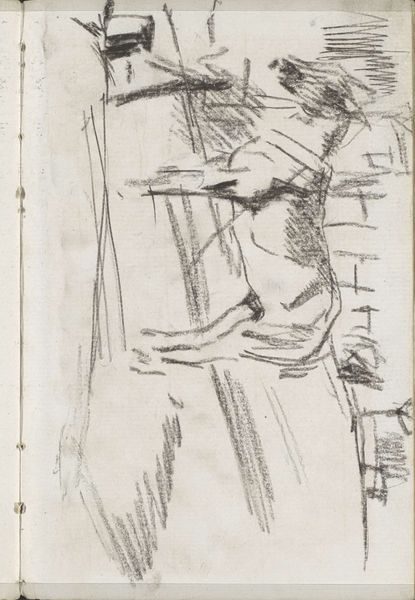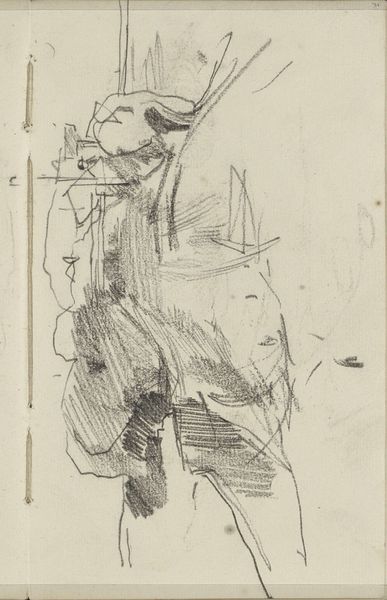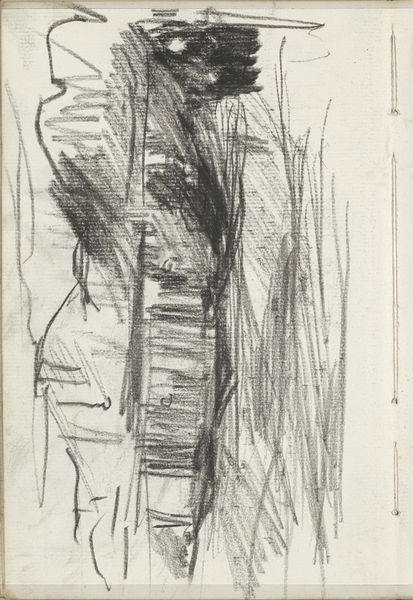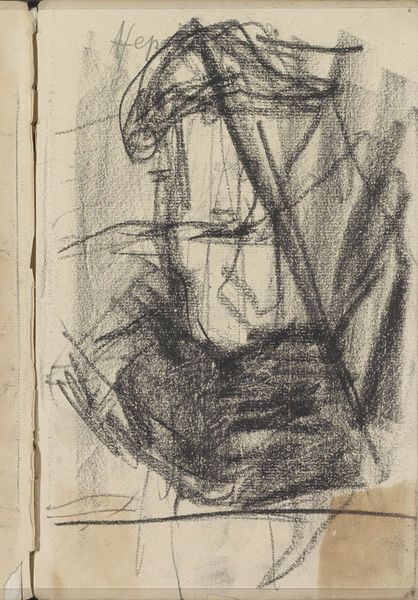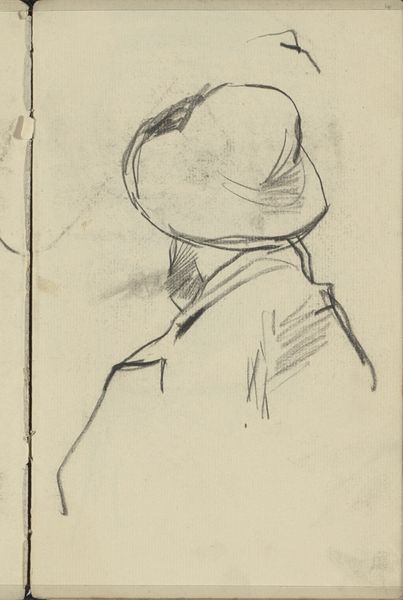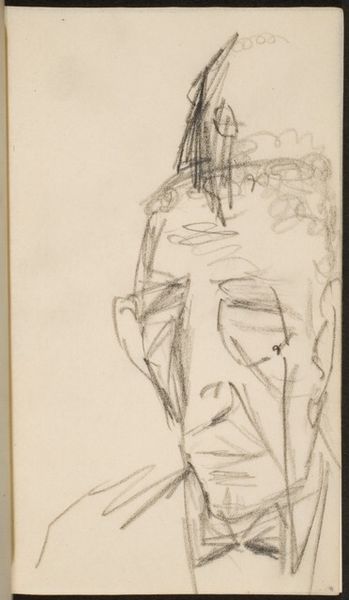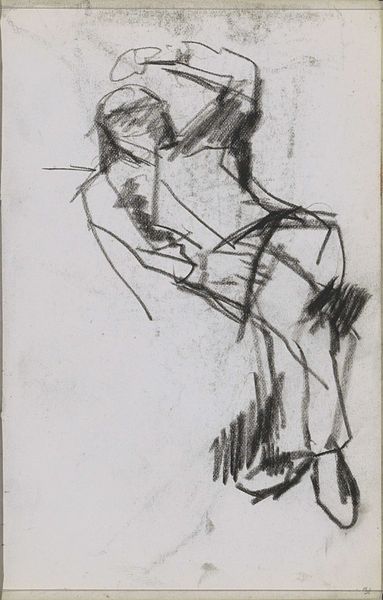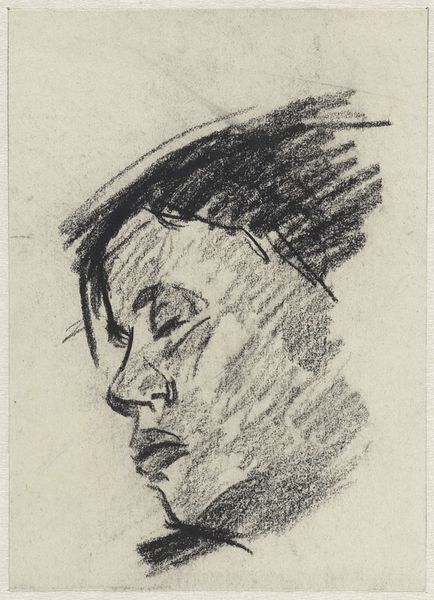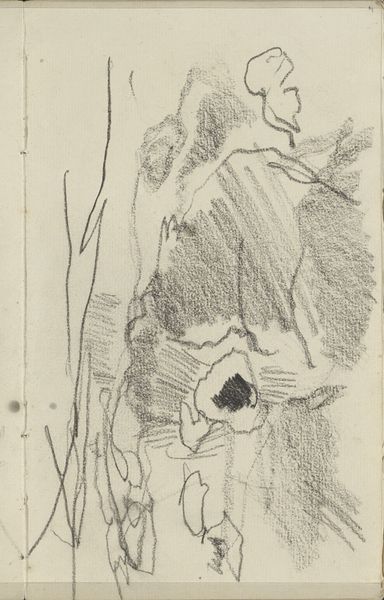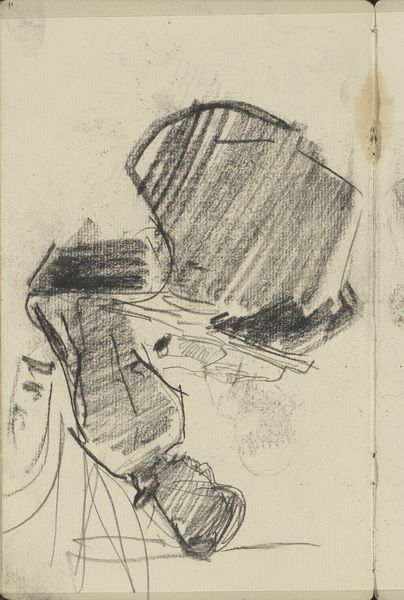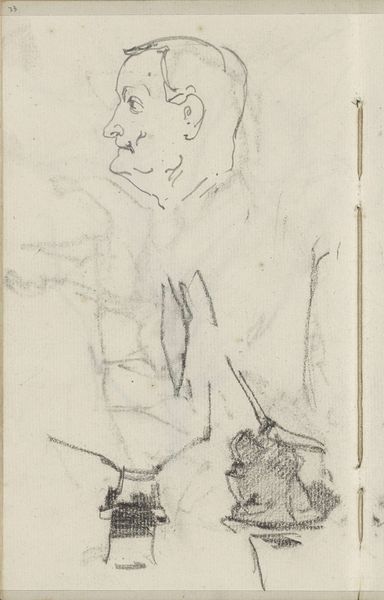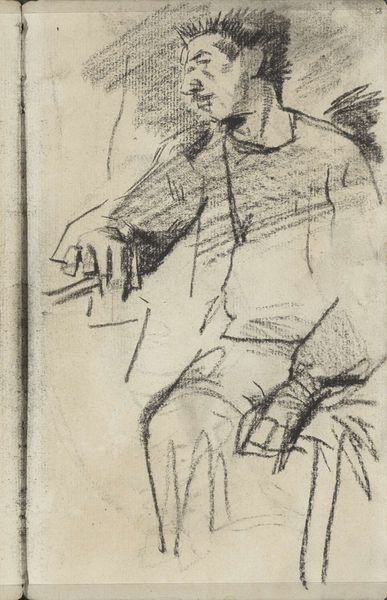
Copyright: Rijks Museum: Open Domain
Editor: Breitner's "Woman with a Hat and Veil," created around 1893-1894, is a charcoal drawing on paper currently held at the Rijksmuseum. There’s a lovely intimacy to this quick sketch – almost as if we’re peeking into the artist's private sketchbook. How do you see this piece, considering the socio-political context of the time? Curator: It’s fascinating to consider this drawing within the context of the rise of the modern woman at the end of the 19th century. Breitner, like many Impressionists, was deeply interested in capturing fleeting moments of contemporary life. The "woman with a hat and veil" isn't a commissioned portrait of the aristocracy but appears to represent one of the emerging urban middle class, whose increased visibility in public spaces generated social commentary about the shifting role of women. Editor: So, her hat and veil might be more than just fashionable accessories? Curator: Exactly. The attire signifies her access to a certain degree of public life, a carefully constructed identity navigating societal expectations. Now, Breitner often worked with models who may or may not have also been sex workers. Do you think it's significant to consider the image’s reception if it became known that Breitner used a model who did that? Editor: Absolutely! The model's social position impacts the image profoundly, adding layers of meaning regarding class and the visibility of certain women. Her portrayal ceases to be simply an exercise in capturing modern life; it morphs into a commentary on the representation and social acceptance of marginalized groups. It gives more power to this drawing than I previously imagined. Curator: Agreed. By viewing art with these aspects in mind, we delve beyond simple appreciation and start to understand the complex interplay between artistic creation and the broader sociopolitical context in which the artwork emerged.
Comments
No comments
Be the first to comment and join the conversation on the ultimate creative platform.
